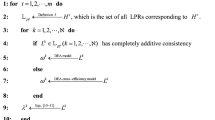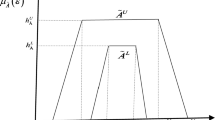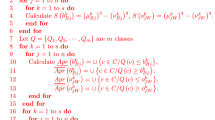Abstract
Aiming at solving the difficult problem of inconsistent single-method evaluation results in comprehensive disaster risk assessment, this paper presents an evaluation method based on a combination of the ranking value and the evaluation value. First, the seven methods of the fuzzy comprehensive evaluation (FCE), the set pair analysis (SPA), the improved grey target analysis (IGT), the fuzzy stochastic simulation (FSS), the grey relational degree analysis (GRA), the extension matter element evaluation (EME), and the technique for order preference by similarity to an ideal solution (TOPSIS) are used to conduct urban comprehensive disaster risk assessment. Second, to ensure the degree of correlation between individual evaluation methods and make full use of more information to achieve the purpose of complementary advantages, the Kendall synergy coefficient, the Spearman rank correlation coefficient, and the comprehensive support coefficient are used as the single-method compatibility consistency test standards. The combined evaluation methods of the cyclic correction model and support model are used to combine the single evaluation results, and the highly coordinated comprehensive disaster risk ranking value and evaluation value are obtained through repeated tests, thus constructing a highly scientific and reasonable dual combination evaluation model. Finally, through analysis and comparison of the final combined ranking and evaluation values of 31 provinces, municipalities directly under the central government and autonomous regions in China under the dual combination mode, it is verified that the dual combination idea can obtain evaluation results with high convergence and credibility, solve the problem of inconsistent evaluation results of multiple methods, provide a new research idea and method for measuring the comprehensive disaster risk of cities, and provide a scientific basis for efficiently serving comprehensive risk prevention management and various urban planning and construction work.















Similar content being viewed by others
References
Cai T, Li XY, Ding X, Wang J et al (2019) Flood risk assessment based on hydrodynamic model and fuzzy comprehensive evaluation with GIS technique. Int J Disaster Risk Reduct 35(4):1–12
Chen PY, Yu HM, **e K et al (2013) Assessment method of surrounding rock quality classification and combination based on support. Geotech Eng 35(12):2233–2237
Dai WQ, Chu JY, Ma DX (2019) Urban disaster comprehensive risk assessment method based on cloud model. J N China Univ Sci Technol Nat Sci Ed 41(1):73–80
Deng X, Li JM, Ceng HJ et al (2012) Analysis and application of the weight calculation method of analytic hierarchy process (AHP) and its application research. Math Pract Underst 42(07):93–100
Gao JJ, Wang W, Su JY et al (2014) Fuzzy stochastic simulation method for comprehensive risk assessment of regional natural disaster. J Saf Sci Technol 10(5):103–109
Guo JW, Pu XQ, Gao X et al (2014) An improved multi-objective decision index weight calculation method. J **dian Univ 41(06):118–125
Hu Q, Tang Z, Shulski M et al (2018) An examination of midwestern US cities’ preparedness for climate change and extreme hazards. Nat Hazards 94(2):777–800
Li H (2013) China natural disaster risk assessment based on improved grey target model. J China West Norm Univ Nat Sci 34(03):284–289
Li HX, Shao DG, He SC (2014) Comprehensive evaluation method of irrigation water efficiency based on cyclic correction. Trans Chin Soc Agric Eng 30(5):65–72
Lian DJ, Zhu J, Li GB (2017) Study on entropy weight and grey target estimation method of community disaster reduction capability: take Suzhou new district as an example. Bull Surv Map 12:98–102
Liu CF, Zuo XJ (2015) A study on dynamic evaluation of urban integrated natural disaster risk based on vague set and information axiom. Nat Hazards 78(1):1501–1516
Liu CF, Zhang JX, Du JZ et al (2019) Research on comprehensive emergency capability of urban high-consequence system based on SPA—VFRM. J Saf Sci Technol 15(7):26–31
Liu SF, Dang YG (2010) Grey system theory and its application, 5th edn. Science Press, Bei**g
Liu YC (2007) A combined evaluation method of cyclic correction. Math Pract Theory 37(4):88–94
Liu YL, Huang XL, Duan J et al (2017) The assessment of traffic accident risk based on grey relational analysis and fuzzy comprehensive evaluation method. Nat Hazards 88(5):1409–1422
Lv H, Guan XJ, Meng Y (2020) Comprehensive evaluation of urban flood-bearing risks based on combined compound fuzzy matter-element and entropy weight model. Nat Hazards. https://doi.org/10.1007/s11069-020-04056-y
Mu R, Zhang JT (2008) Hierarchical comprehensive evaluation based on grey relational analysis. Syst Eng-Theory Pract 28(10):125–130
O’Brien K (2008) Disaster risk reduction, climate change adaptation and human security. Report prepared for the Royal Norwegian Ministry of foreign affairs by the global environmental change and human security (GECHS) project, GECHS report 2008:3
Schipper L, Pelling M (2006) Disaster risk, climate change and international development: scope for, and challenges to, integration. Disasters 30(1):19–38
Shen S, Cheng C, Song C (2018) Spatial distribution patterns of global natural disasters based on biclustering. Nat Hazards 92(3):1809–1820
Shi PJ, Li N, Ye Q et al (2009) Research on global environmental change and integrated disaster risk prevention. Adv Earth Sci 24(4):428–435
Shi PJ, Li N, Ye Q et al (2010) Research on integrated disaster risk governance in the context of global environmental change. Int J Disaster Risk Sci 1(1):17–23
Shi PJ, Ye Q, Han GY et al (2012) Living with global climate diversity—suggestions on international governance for co** with climate change risk. Int J Disaster Risk Sci 3(4):177–184
Tao Q, Wang W (2005) Fuzzy comprehensive evaluation of decision support system. Math Pract Theory 35(5):71–79
Wang WS, ** JL, Li YQ (2009) Study on comprehensive evaluation of natural disaster risk based on set pair analysis. J Sichuan Univ Eng Sci Ed 41(6):6–12
Wang W, Su JY, Ma DH et al (2013) Nonlinear information dynamics model for comprehensive risk assessment of complex disaster systems. Chin Sci Tech Sci 43(01):71–78
Wang WD, Li JL, Han Z (2020) Comprehensive assessment of geological hazard safety along railway engineering using a novel method: a case study of the Sichuan-Tibet railway, China. Geomat Nat Hazards Risk 11(1):1–21
**a CH, Wang W, Ma DH et al (2019) Study on double combination evaluation method of urban comprehensive disaster risk. China Saf Sci J 29(7):156–163
Yin J (2008) Comprehensive risk assessment of urban disasters. Shanghai Normal University, Shanghai
Zhang MY (2008) Research on the assessment of disaster carrying capability and disaster comprehensive risk in urban place. Dalian University of Technology, Dalian
Zhang JJ, Ma CM, Yu H et al (2017) Research on matter element extension of soil heavy metal pollution in Qingdao City. China Environ Sci 37(2):661–668
Zhang J, Zhang ZH, Li XD et al (2018) Evaluation of port military transport capacity based on TOPSIS method based on entropy weight. J Tsinghua Univ Sci Technol 58(05):494–499
Acknowledgements
This work is supported by the National Natural Science Foundation of China (51678017), National Key R&D Program of China(Grant No. 2018YFD1100902-1), Natural Science Funds of Hebei Provincial Department of Education (QN2018094), and Natural Science Foundation of Hebei Province (G2018202059, E2019202470).
Author information
Authors and Affiliations
Corresponding authors
Additional information
Publisher's Note
Springer Nature remains neutral with regard to jurisdictional claims in published maps and institutional affiliations.
Rights and permissions
About this article
Cite this article
Wang, W., **a, C., Liu, C. et al. Study of double combination evaluation of urban comprehensive disaster risk. Nat Hazards 104, 1181–1209 (2020). https://doi.org/10.1007/s11069-020-04210-6
Received:
Accepted:
Published:
Issue Date:
DOI: https://doi.org/10.1007/s11069-020-04210-6




